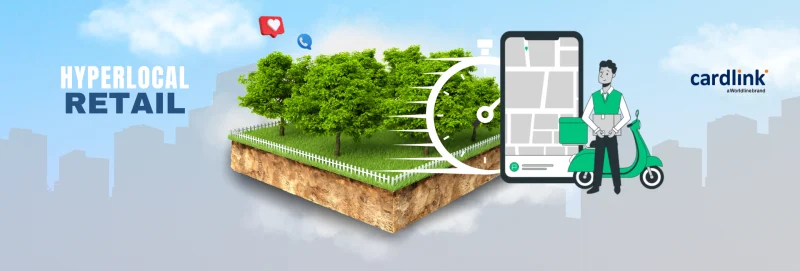Unlocking the potential of Hyperlocal Retail

Exploring the advantages of focusing on small geographical areas in the era of global retail trade.
In an era where convenience and immediate satisfaction are top priorities, Hyperlocal Retail is reshaping the retail landscape, surpassing traditional sales models. By concentrating on delivering personalized products and services to specific geographic communities and placing a strong emphasis on efficiency in the delivery sector, hyperlocal retail utilizes modern technology to redefine how consumers engage with local businesses.
What is hyperlocal retail?
The term “hyperlocal” indicates a focus on a specific community or geographic area, addressing the needs of a clearly defined location, often extending only a few kilometers. To serve customers, both physical and online stores are utilized, along with platforms and smartphone applications. Special emphasis is placed on providing immediate delivery services, aiming to efficiently meet the needs of community members. By narrowing its focus to the boundaries of a neighborhood or a specific location, Hyperlocal Retail seeks to create a strong connection with local consumers, enhancing their loyalty. Essentially, it leverages modern technology to effectively bridge the gap between supply and demand, offering a high level of convenience and speed that traditional retail struggles to match.
Although Hyperlocal Retail shares many similarities with other approaches, involving fast delivery in retail, such as q-commerce (delivery in a very short time from order, even within 15-20 minutes), what sets it apart is its emphasis on connecting local businesses with the local community.
Understanding the business model behind Hyperlocal Retail
As easily understood, a defining characteristic of Hyperlocal Retail is its emphasis on addressing the immediate needs of consumers in a specific area. Through online platforms like smartphone apps and e-shops, hyperlocal businesses connect customers with nearby retail merchants and transportation services. In contrast to traditional e-commerce models, which prioritize broader market coverage, hyperlocal business models shine by providing swift solutions to the immediate needs of consumers in proximity.
Whether it’s grocery shopping, food orders, or healthcare and home maintenance services, hyperlocal e-commerce platforms have revolutionized how consumers access goods and services in their communities. The success of the hyperlocal business model hinges on its ability to deliver high-quality products and services directly to customers’ doors at impressive speeds. Leveraging technologies such as GPS, smartphone apps, and social media, hyperlocal businesses optimize the entire process.
Businesses following this model rely on two main collaborators: local product suppliers (referred to as local retailers) and delivery agents, creating an ecosystem that facilitates the swift delivery of orders. Customers place orders through the platform, which forwards the order to a partnered retail store. The retailer prepares and packages the order, while delivery agents pick up the package and transport it to the customer’s location. It’s a win-win model: customers enjoy fast and easy access to products, while local retailers gain access to a broader customer base.
The common goal of businesses and what they offer
Hyperlocal platforms primarily cater to technologically savvy customers, typically from the Millennial and Gen Z generations, who prioritize convenience and are accustomed to daily use of online platforms for various needs. These platforms offer undeniable convenience, allowing customers to order products and services with just a few clicks, eliminating the need to visit physical stores. The key benefits include:
- Immediate ordering: Customers can swiftly order items for immediate delivery or easily schedule pickups.
- Convenience: Hyperlocal platforms optimize the shopping experience, making it efficient and hassle-free.
- Variety of options: Multiple retail businesses are accessible simultaneously on a single platform, providing a diverse range of choices.
- Real-time tracking: Customers can track their orders in real-time, enhancing transparency and control over their purchases.
This distribution model is particularly well-suited for products such as fresh foods and vegetables, pharmaceutical items, personal care products, paper goods, pet products, small household appliances, and all essentials for daily life in homes or small businesses.
Challenges and future trends
While hyperlocal retail has become a dominant trend in the industry, it does not come without its share of challenges. Addressing fluctuations in demand, optimizing delivery routes, and managing an effective workforce pose ongoing challenges. Local businesses also grapple with competition from larger retail chains that offer fast delivery through q-commerce and last-mile solutions. Additionally, smaller businesses face limitations imposed by small storage spaces. Expanding the customer base is another significant hurdle for hyperlocal businesses.
However, the future of hyperlocal retail is very promising, marked by emerging trends such as the integration of artificial intelligence-based technologies, the extension into non-essential goods and the redefinition of last-mile delivery. As both e-commerce giants and local businesses continue to embrace hyperlocal models, the retail experience is becoming more localized and customer centric. Hyperlocal retail is ready to redefine how consumers access products and services, ushering in a new era of convenience and adaptation.


